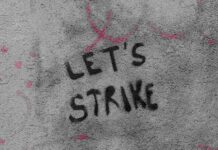
Social media connects in a way nothing else before ever has. It takes the basic tools of the internet and creates a communal immediacy to a headline or an allegation with an alacrity that belies anything else in the history of communication.
The consequences of this incredible communication tool can be both positive and negative. Do something great, and you could receive worldwide recognition in minutes. However, if you are connected to something negative, you better be ready with a quick, concise, and plausible response, or things could snowball very quickly.
Take, for example, the recent case of several major fashion brands getting hammered with accusations of “animal cruelty” after it surfaced that these popular clothing brands sourced some of their raw materials from South African goat farms branded as cruel and problematic.
The brands in question included Gap and H&M, as well as other brands like Topshop and Zara. Almost immediately after PETA released a report detailing what the organization cites as abusive practices, linking those activities with the brands in question, concerned consumers took to social media to discuss the issue, both with each other and with the brands directly.
PETA reportedly posted results from a study that discovered multiple farms in South Africa that were “shearing too quickly” and thus “causing injury” to the animals. A video, a few photos and a few lines of text is all it took to put Gap and others right in the crosshairs of angry consumers. PETA said some animals died from their injuries or from malnutrition. Another video, this one showing workers killing goats with knives while the animals were still conscious, turned consumer anger into seething rage.
Think about that, you’re in charge of your brand’s social media communication platform. Everything is going well: engagement is good, reviews are mostly positive, then… BOOM… out of nowhere a bomb is dropped right in the middle of your carefully cultivated news feed. Before you really know what’s happening, you’re a trending hashtag, and not because your customers are singing your praises.
Sensing the need for an immediate response, H&M offered a statement which read, in part: “For us it is of utmost importance that animals are treated well and we have therefore decided to permanently ban mohair…”
While some might consider this an extreme reaction, for the clothing brand, it seemed the right move in a highly-charged and hostile communication environment. Another brand, Topshop, also voiced concerns while vowing to eliminate Mohair. Gap followed suit, saying Gap stores, as well as Banana Republic and Old Navy, would no longer make clothes with Mohair, starting next year.
So, out of those brands caught in the consumer PR rage, at least three made the decision to stop sourcing that material altogether, rather than finding a new supplier. In context, especially when comparing each response to the others, it’s hard to see they had much choice. None of these brands wanted to be the one that didn’t act.
Ronn Torossian is the CEO of 5W Public Relations
Discover more from Ronn Torossian
Ronn Torossian’s Professional Profile on Muck Rack
GuideStar Profile for Ronn Torossian Foundation
Ronn Torossian’s Articles on Entrepreneur
Ronn Torossian’s Blog Posts on Times of Israel
Ronn Torossian on SoundCloud




